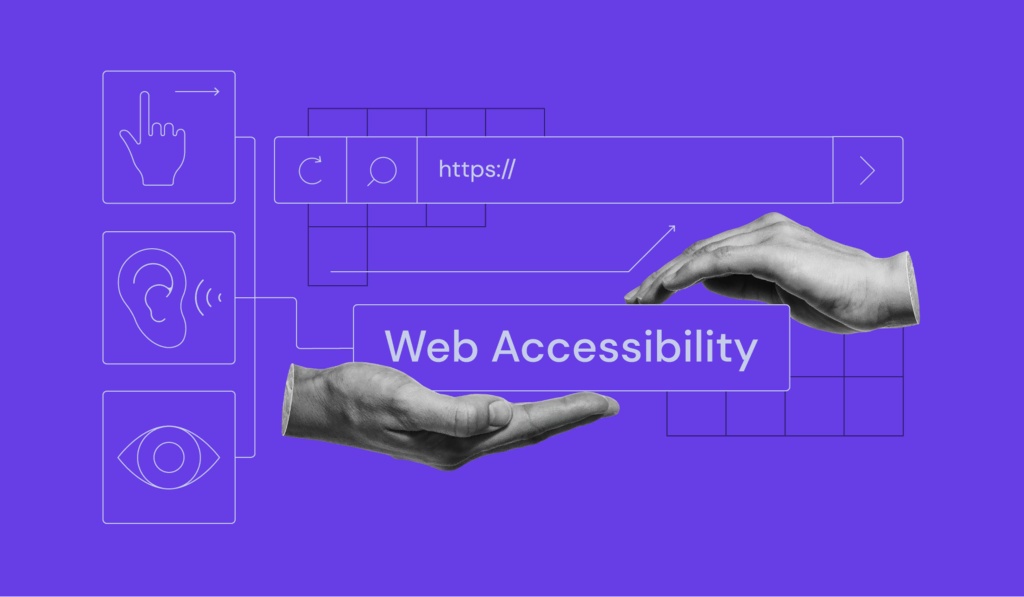In today’s digital age, web accessibility (often abbreviated as A11y) is not just a consideration but a necessity. Accessibility ensures that everyone, regardless of their abilities or disabilities, can access and interact with websites, applications, and digital platforms. As digital inclusion becomes more critical, understanding and implementing accessibility is essential for developers, designers, and organizations.
This detailed guide explores the principles of accessibility, its importance, and practical steps to create an inclusive digital environment.
1. What is Accessibility (A11y)?
Accessibility (A11y) refers to the practice of making digital content usable for everyone, including individuals with disabilities. Disabilities can encompass a wide range of challenges, such as:
- Visual impairments (e.g., blindness, low vision, or color blindness)
- Hearing impairments (e.g., deafness or hearing loss)
- Motor disabilities (e.g., difficulty in using a mouse or keyboard)
- Cognitive challenges (e.g., memory, attention, or learning difficulties)
An accessible website ensures that all users can navigate and interact with it effectively. Tools like screen readers, keyboard navigation, and voice control play a critical role in accessibility.
“The power of the web is in its universality. Access by everyone, regardless of disability, is an essential aspect.”
– Tim Berners-Lee
2. Why Accessibility Matters
Accessible design is not only a moral obligation but also a legal and business imperative. Here’s why it matters:
a. Broader Reach
- By making your content accessible, you can cater to a wider audience, including the 1 billion people worldwide who experience some form of disability.
b. Improved User Experience (UX)
- Accessibility enhances the overall usability of a website. Features like clear navigation, consistent design, and readable text benefit all users.
c. Better SEO Performance
- Search engines reward websites that use proper semantic structures, alt text, and descriptive headings. Learn more about HTML Semantic Elements to build meaningful and accessible web pages.
d. Legal Compliance
- Many countries have laws mandating web accessibility, such as the Americans with Disabilities Act (ADA) or the Web Content Accessibility Guidelines (WCAG). Non-compliance can lead to penalties.

3. Principles of Accessibility
To ensure accessibility, adhere to the following four core principles:
a. Perceivable
- Content should be presented in ways users can perceive, such as text alternatives for images and transcripts for audio content.
b. Operable
- Ensure all users can navigate and interact with the website, regardless of their input method (keyboard, mouse, or voice).
c. Understandable
- Make content simple and intuitive, avoiding jargon or overly complex layouts.
d. Robust
- Ensure compatibility with various assistive technologies and devices, both current and future.
These principles extend beyond web design to areas like presentation design. Check out Presentation Design for Corporate Meetings to make your communication materials accessible too.
4. Steps to Implement Accessibility
a. Use Proper HTML Structure
- Leverage semantic elements like , , and to provide a clear structure for screen readers.
b. Add Alt Text to Images
- Provide descriptive alt text for all images to convey their purpose to visually impaired users.
c. Ensure Sufficient Color Contrast
- Use contrasting colors for text and background to ensure readability.
d. Enable Keyboard Navigation
- Ensure that every interactive element (links, buttons, forms) can be navigated using a keyboard.
e. Test for Accessibility
- Use tools like Lighthouse, Axe, or WAVE to identify and fix accessibility issues.
For those new to development, understanding front-end basics can significantly aid in creating accessible web designs. Learn more in Unlocking the Basics of Front-End Development.

5. Common Accessibility Challenges and Solutions
a. Missing Alt Text
Solution: Always add meaningful alt text for images, explaining their context.
b. Poor Color Contrast
Solution: Use online tools to verify contrast ratios and ensure compliance with WCAG standards.
c. Inaccessible Forms
Solution: Label form fields clearly and include error messages that can be read by assistive technologies.
d. Non-Descriptive Links
Solution: Use descriptive anchor text, such as “Learn more about HTML Semantic Elements” instead of “Click here.”
6. Accessibility Benefits Everyone
Accessibility features often benefit all users, not just those with disabilities. For instance:
- Captions on videos are helpful in noisy environments.
- Voice navigation is convenient for hands-free device use.
- High contrast improves readability in low-light settings.
Conclusion
Accessibility (A11y) is a cornerstone of modern web design, fostering inclusivity and usability for all. By implementing accessible practices, you can:
- Enhance your audience’s experience
- Improve your site’s performance
- Meet legal and ethical standards
Start small by addressing the basics, then build on your accessibility knowledge as you go. Remember, accessibility is not a one-time task—it’s an ongoing commitment to digital inclusion









